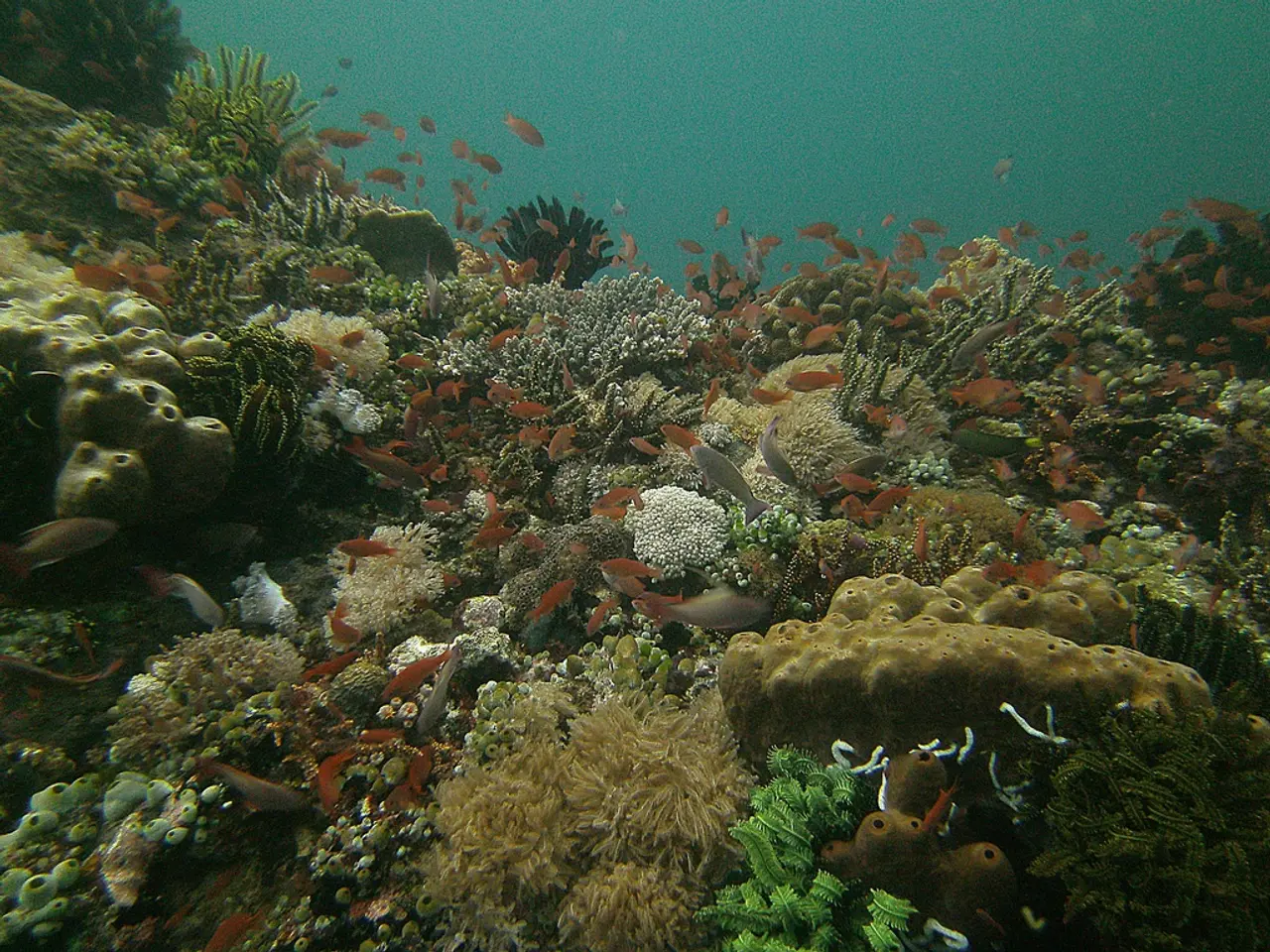Researchers Unearth Thirty New Marine Creatures in the Galapagos Islands
In the vast, unexplored depths of the Galapagos Marine Reserve, a team of scientists, including researchers from the Charles Darwin Foundation (CDF), the Galapagos National Park Directorate, the Ocean Exploration Trust (OET), and an international group of deep-sea experts, have made significant strides in deep-sea research. Over a five-year period, they used Remote Operated Vehicles (ROVs) to venture into the abyss, reaching depths of up to 3400 meters.
Their efforts have yielded remarkable findings, published in the journal Scientific Reports. Among the new species discovered are 10 new species of bamboo corals, 4 new octocorals, 1 new species of brittle star, 11 new sponge species, and 4 new species of squat lobsters. One of the most intriguing discoveries is the new giant solitary soft coral, the first of its kind in the Tropical Eastern Pacific.
These discoveries underscore the importance of deep-sea exploration for understanding our oceans. The Galapagos Islands, located off the coast of Ecuador, are renowned for their biodiversity and endemic species, a testament to their isolation over time. This isolation has led to unique adaptations and evolutions, as demonstrated by the species found on seamounts that do not break the ocean's surface.
The Galapagos Marine Reserve, established to protect these seamounts from fishing activity and deep-sea mining, plays a crucial role in preserving this rich ecosystem. However, concerns have been raised about illegal fishing activities, with Ecuador voicing concerns about a massive fishing fleet of mostly Chinese vessels operating on the edge of the protected waters.
Ecuador is not only guarding its marine resources but also aiming to expand its protective measures. Efforts are underway to extend the exclusive economic zone to a 560km circumference around the Galapagos Islands. Moreover, Ecuador is collaborating with neighbouring countries to establish a corridor of marine reserves, aiming to protect important areas of marine diversity between Costa Rica, Panama, and Colombia.
In 2019, a species of giant tortoise that hadn't been seen alive for 110 years was found, further emphasising the importance of conservation efforts. In February, 30 giant tortoises that partially descended from two extinct species were studied, adding to the ongoing research and conservation efforts.
The Galapagos Islands, with their rich history and unique biodiversity, continue to captivate scientists and researchers, offering a fascinating insight into the mysteries of our oceans. Charles Darwin's visit to the Galapagos Islands in 1835 played a significant role in the development of his Theory of Evolution, and these discoveries continue to inspire and challenge our understanding of evolution and adaptation.
Meanwhile, China has issued new regulations for its fishing fleet, including harsher penalties for illegal fishing activity, a step towards ensuring the preservation of marine life and ecosystems worldwide. As we delve deeper into the oceans, these discoveries serve as a reminder of the importance of responsible exploration and conservation.
Read also:
- Peptide YY (PYY): Exploring its Role in Appetite Suppression, Intestinal Health, and Cognitive Links
- Toddler Health: Rotavirus Signs, Origins, and Potential Complications
- Digestive issues and heart discomfort: Root causes and associated health conditions
- House Infernos: Deadly Hazards Surpassing the Flames








